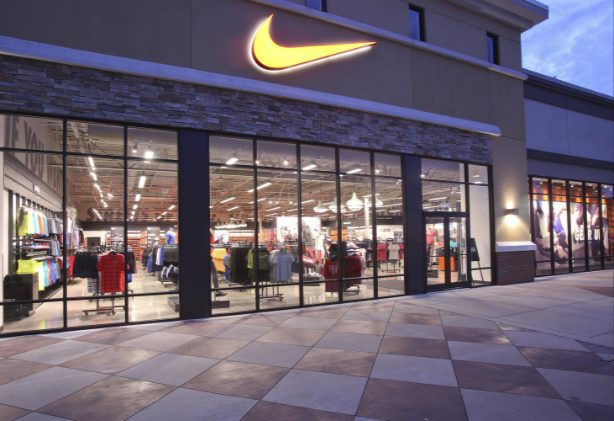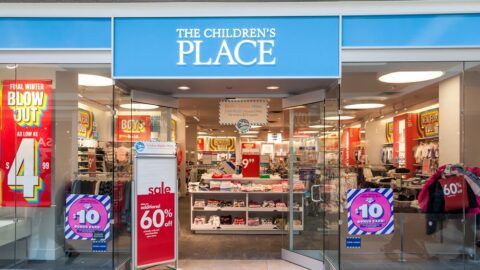Nike, long a dominant brand in the footwear and activewear industries, has hit a bit of a bumpy road in 2016. As competitors such as Under Armour and Adidas keep Nike on its toes and sporting goods retailers shutter their operations, the brand’s stock has tumbled more than 10% since the start of the year, marking its worst first half Wall Street performance since 2001 when it dropped nearly 25%.
In its recent Q4 earnings report the brand revealed that:
-
Quarterly revenues increased 6%;
Advertisement
-
Quarterly revenues in North America remained flat;
-
Quarterly net income dipped 2%;
-
Inventory increased 12% year-over-year; and
- Quarterly futures orders rose 11%.
Adidas And Under Armour Climb Up The Standings
Nike’s longtime competitor Adidas appears to be regaining relevance in athleticwear sales, putting added pressure on the brand. In Q1, Adidas had global revenue growth of 22%, with the company also experiencing 22% sales growth in North America. Footwear retailer Finish Line even made it a point to highlight the growth of its Adidas sales as a reason the retailer beat Wall Street expectations in Q1. Adidas also expanded its partnership with hip-hop artist Kanye West in a move designed to build co-branded stores and bring the Yeezy shoe line to professional athletes.
While Nike is typically associated with basketball, in large part due to its longstanding partnership with sports icon Michael Jordan, that sport is no longer the company mainstay that it used to be. Even though annual product sales of the Jordan Brand jumped 18% to nearly $2.8 billion, Nike brand basketball footwear and apparel sales fell 1% to $1.4 billion.
On the other hand, Under Armour has seen basketball-related success in spades recently, with NBA star Stephen Curry’s signature basketball line leading the brand to a 64% increase in Q1 footwear revenue. Under Armour also is amping up its technology efforts in a way Nike has yet to capitalize on, through its Connected Fitness health network. The brand can leverage data from its 170 million+ Connected Fitness users to create personalized experiences for shoppers via mobile apps.
Sporting Goods Difficulties Show Ominous Signs For Future Orders
Nike’s global futures orders are a big factor to keep an eye on for the brand’s outlook, in that they reflect retailers’ demand for delivery of Nike products over the next few months. While the 11% increase would generally be considered a positive result, this total represents the fourth straight quarter that futures orders growth has slowed. Retailers simply haven’t been buying as many Nike products in advance as they have in the past.
The closure of several major sporting goods retailers in recent months certainly hasn’t helped increase this demand or clear up concerns about excess inventory. Sports Authority is the most famous of the brands closing up shop upon liquidating all of its assets, while lesser known retailers such as Sports Chalet and City Sports recently shut down their store operations as well. (City Sports was sold to new management and is presently undergoing a revitalization). Without these added channels, both in the store and on e-Commerce sites, the Nike brand, like many other athleticwear companies, is losing out on short term sales.
While Nike has neither commented on the closings or taken an organizational reaction to them, Under Armour updated its 2016 outlook based on the Sports Authority bankruptcy. Under Armour will take an impairment charge of approximately $23 million this quarter, and will only be able to recognize $43 million of an originally planned $163 million in revenue to be generated through Sports Authority in 2016. Given the effects of Sports Authority’s demise on Under Armour, it is definitely feasible that Nike will have to deal with similar financial repercussions.
On the bright side, Nike’s direct-to-consumer (DTC) retailing revenues did improve 23% in the quarter, spurred by 39% online sales growth. Full year totals indicate that DTC has remained a big success for Nike, with online sales growing 51% and comparable store sales growing 10%.
The success in its own stores shows that Nike isn’t having a problem with demand as a whole, but it will certainly need to make note of what competitors are doing, particularly when it comes to building out e-Commerce and mobile experiences and leveraging its celebrity partnerships. Perhaps more than ever, there is a need for big brands such as Nike to be more self-reliant in an era where many stores are going by the wayside.









